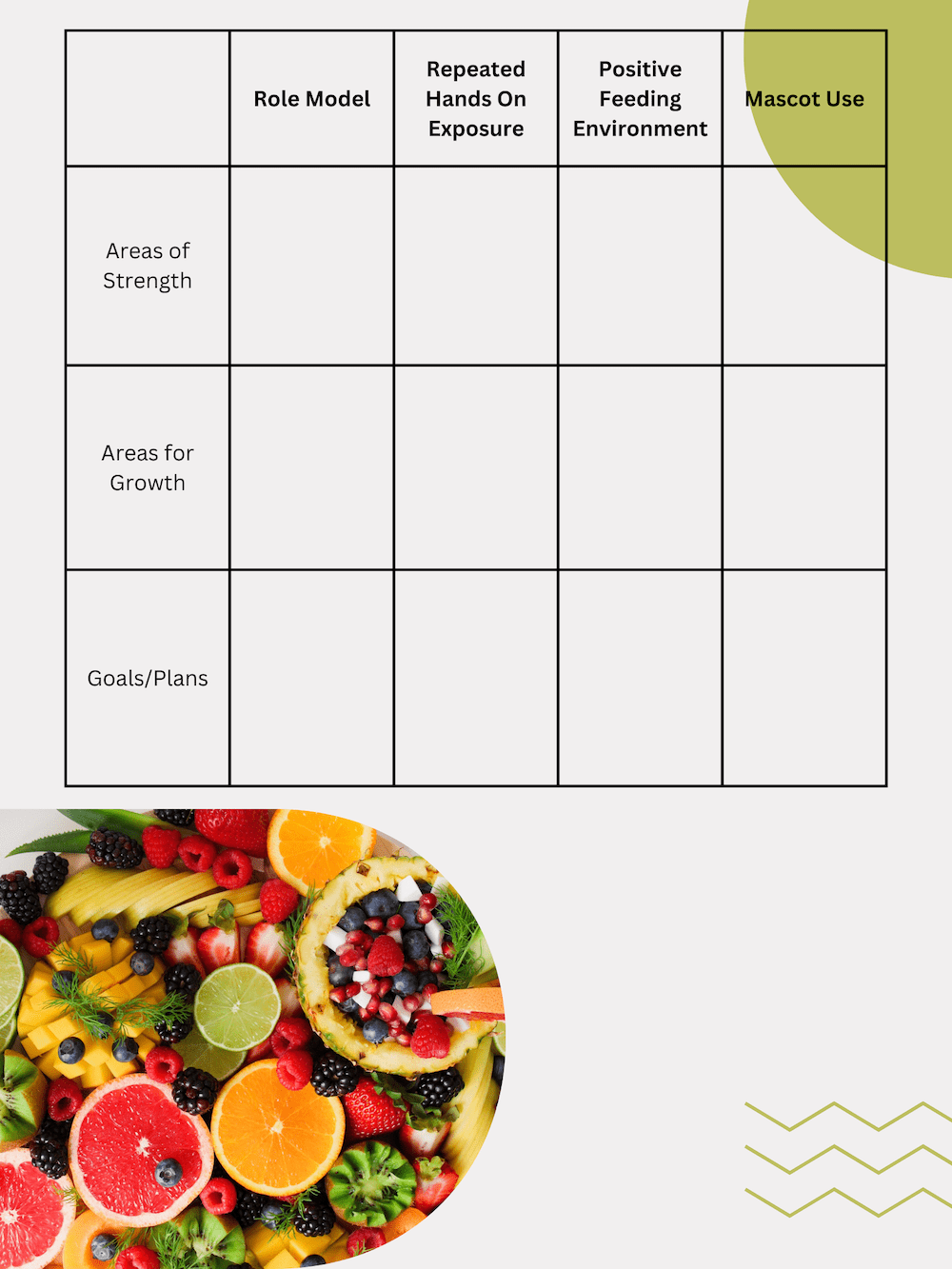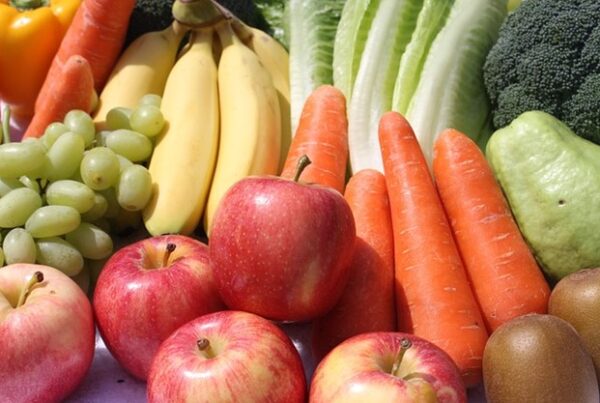By Crystal Williams, Ed.M.
In the recent OneOp webinar, Increasing Children’s Fruit and Vegetable Exposure: Tools for Practitioners Serving Families Experiencing Limited Income, Dr. Taren Swindle and Dr. Julie Rutledge provided evidence-based practices early childhood professionals can use to promote positive eating habits. In this blog, we describe the four evidence-based practices, provide specific strategies and resources that professionals can use, and offer an opportunity for reflection.
- Role model: Young children learn by watching others, so it is important that adults’ eating habits reflect the habits they want to see in children. As an early childhood professional, you are in a prime position to model healthy eating habits. You can use the strategies below to do so or you can encourage families to use these strategies.
-
- Sit with children during meals and eat the same foods they are offered.
- Make positive statements about the food (e.g., “I love how the carrots crunch!”, “This applesauce is so cold and delicious.”)
- Use positive descriptive feedback when children eat healthy foods (e.g., “Nani ate all of her green beans!”, “Camden, I’m proud of you for trying your lettuce today!”). For recommendations about giving positive descriptive feedback, see this resource from the National Center for Pyramid Model Innovations.
- Repeated hands-on exposure: Children learn best when they have active, hands-on experiences to explore using their senses. By participating in activities that allow children to do something, they will be more engaged and can more easily recall the information later. Adults can use the strategies below to intentionally activate children’s senses and learning.
-
- Provide hands-on learning opportunities that focus on healthy foods. You can find many hands-on lessons (K- 8) on the Illinois Agriculture in the Classroom website.
- Plan hands-on activities centered on books about healthy eating (e.g., The Very Hungry Caterpillar, Eating the Alphabet: Fruits and Vegetables A to Z, Eat Your Colors). For example, children can sort the foods in The Very Hungry Caterpillar by those that made the caterpillar feel sick vs. those that made the caterpillar feel better or they can help make a “caterpillar salad” made of the healthy foods the caterpillar ate.
- Implement hands-on activities with small groups of children to prevent long wait times and provide targeted/individualized support.
- Give students opportunities to grow vegetables or make healthy recipes.
- Allow children to help set the table and make plates for meals.
- Positive feeding environment: Mealtimes at home and school provide opportunities for children to learn, build connections with others, and develop lifelong habits. To help provide a positive mealtime environment for children, you can use the following strategies.
-
- Facilitate positive conversations during meals. Check out this resource from North Dakota Childcare Aware for conversation starters you can use with children.
- Ensure each child is included in conversations by offering support for children who need it. For example, children who have feeding tubes should still be welcomed at the table during meals, and children who do not speak verbally should be given opportunities to communicate using pictures or gestures.
- Adjust the schedule as needed to allow more time for meals and avoid rushing children during meals.
- Offer healthy snacks throughout the day or as a center option that children can choose freely.
- Let children choose what and how much to eat. Put all options on their plate but do NOT force them to finish a specific food before getting more of a preferred food.
- Mascot use: Children enjoy foods that are associated with familiar characters, such as popular cereal brands (e.g., Tony the Tiger on Frosted Flakes). By using a stuffed character to talk about healthy foods, children will associate the foods with the character. You can use the following strategies with a food mascot to promote healthy eating habits.
-
- Let children choose a stuffed character or puppet to be their food mascot by providing them with 2 or 3 options and allowing them to vote on their favorite.
- Use the food mascot to teach children about healthy foods. You can create a skit for the mascot to tell children about healthy foods or have the mascot read books about healthy foods.
- Model eating healthy foods with the food mascot. You can do this by “feeding” the mascot toy foods or encouraging children to “make” the mascot healthy foods out of paper and other materials.
- Create a chant, saying, or song that the food mascot can say before meals or during lesson plans related to foods. For example, WindyWise, an owl mascot, asks the children, “Whooooo tried it?” As another example, your mascot could chant, “I like carrots, how about you? We all like carrots, yes, we do!”
Healthy eating habits need to be established early! As an early childhood professional, you can use the strategies above and/or encourage families to use them to promote lifelong habits.
Complete the self-reflection form below by identifying your strengths, areas for growth, and goals for yourself. fresh fruit social media template (Poster)





![Blog Post Image: Pexels [Silhouette Photo of Jumping Children, photo by Margaret Weir, Sept. 22, 2017, CC0]](https://oneop.org/wp-content/uploads/2024/04/pexels-margaret-weir-620530-600x403.jpg)










